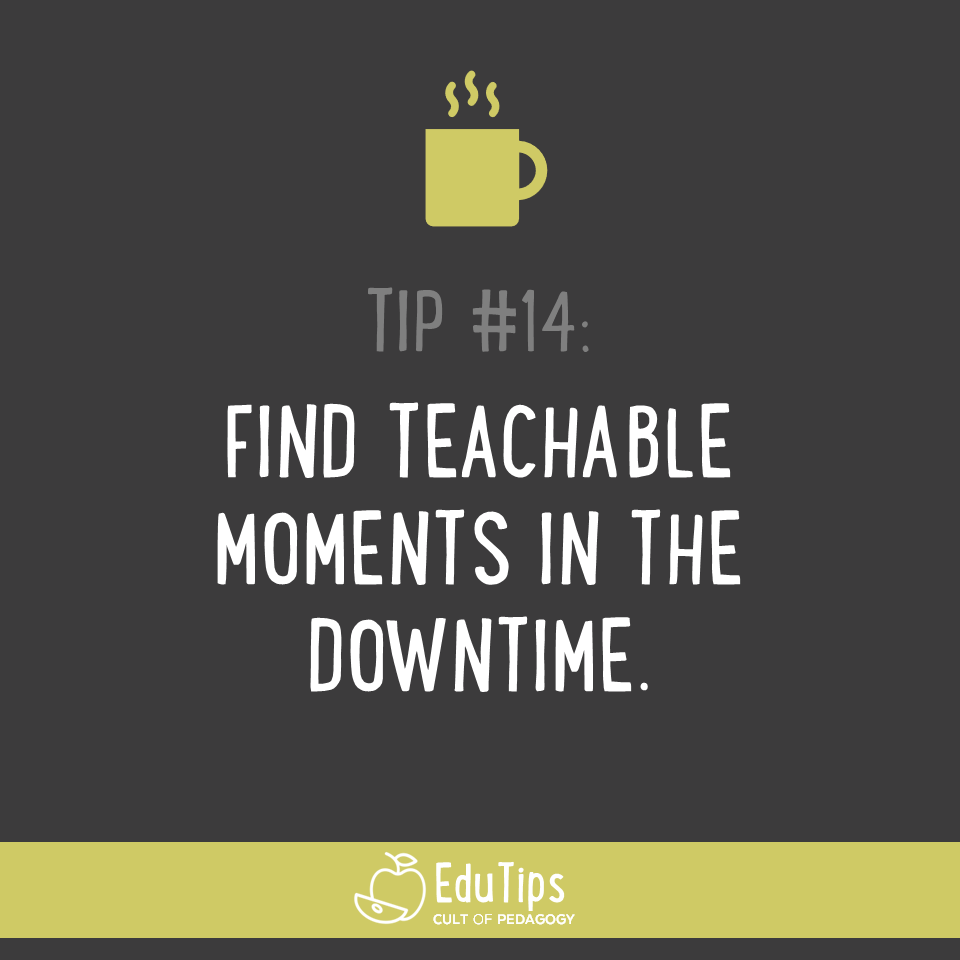Sponsored by Pear Deck.

If you look at the total time you and your students spend together during the school day, and subtract from that time the number of minutes you spend actually teaching, you’ll end up with a LOT of time. For the sake of discussion, let’s call this “downtime,” even though you and your students may or may not be actually enjoying time off. It’s the non-instructional time, the minutes when everyone is just coming into class, walking down the hall, waiting in line at the cafeteria, or packing up to leave. Even though you’re not giving academic lessons during that time, there are still plenty of opportunities for teaching if you recognize them.
Here’s an example: Say you’re in your room on your planning period, and you walk down to the office to get something. On the way, you run into one of your students, who is walking in the same direction. As you walk together, you ask her what she has going on over the weekend, and you learn that her stepmother is due to have a baby any day now, so the family is waiting for that. You also pick up the vibe that the student is kind of apprehensive about the new arrival and how it will likely change the family dynamics. You validate those feelings by saying that you would probably feel the same way in her shoes. You share how completely overwhelmed you were by the birth of your first child, and how things do eventually settle down, but it is still a big change.
In that 60 seconds you learned an important fact about the student’s life which could definitely impact her classroom performance and emotional state, and you can follow up with her in the upcoming weeks by asking whether the baby has arrived and how everyone is adjusting. This will make your student feel seen and known. You have also shared a bit about your own life, which further builds that relationship and makes you more human to that student.
This example was a more personal one, but you could have also used that time to ask about something academic, like what she thought about the story you read in class or the activity you did. You could have discussed a recent movie that everyone is talking about. You could have told her about the chicken coop your next-door neighbor is building—could that spark an interest in that student for raising chickens? Maybe, maybe not. You never know. These small moments are opportunities to assess students academically and emotionally, to build relationships with them, and to model dispositions and attitudes you think are worth passing on.
Am I not just describing regular conversations that people have all the time? Yes, but the twist here is the intentionality: Even if you’re not actively thinking of ways to make the most of this time—which would be perfectly understandable, especially in a profession that requires so much cognitive processing all day long—at the very least keep in mind that students are watching everything you do and learning from all of it.
See all EduTips here.
